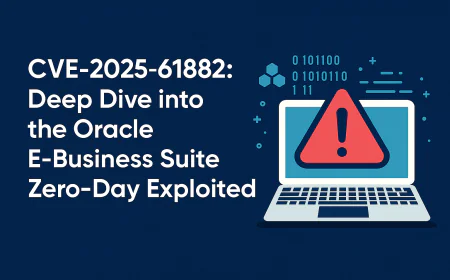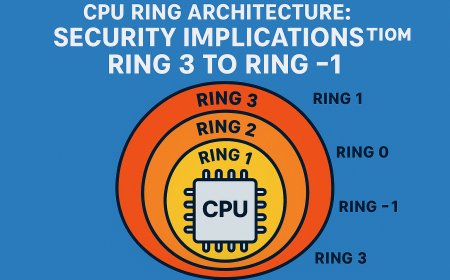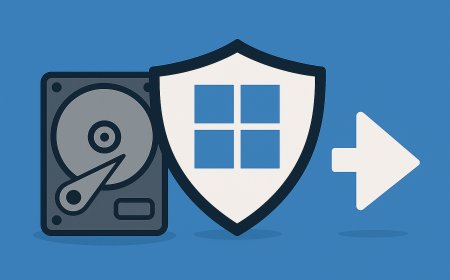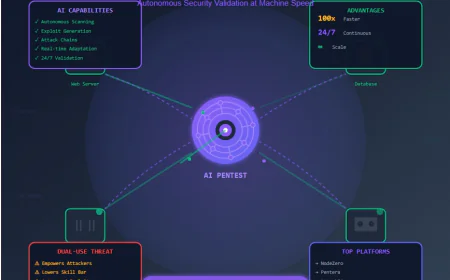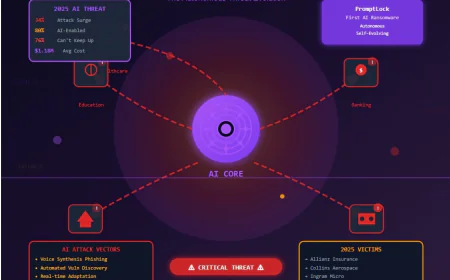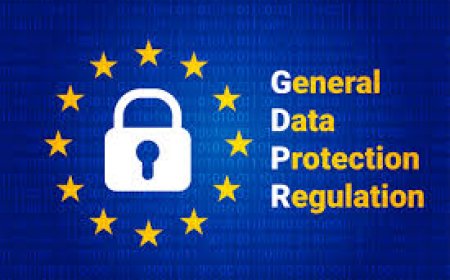GDPR Handbook for Cybersecurity Professionals
A comprehensive guide for Cybersecurity Professionals on the GDPR. It details how GDPR serves as a mended for strong cybersecurity covering security requirements, legal framework, compliance mechanism and high fines.

Introduction
General Data Protection Regulation (GDPR) is one of the most important privacy and security laws in the world, this will changed the way organizations collect, store, and use personal data. Whenever we run a small business or any type of global enterprise, GDPR affects how we will handle customer information or data. We live in a world where data is everywhere, from online shopping, social media, banking apps, etc. we regularly share lots of personal information and because of data will become so valuable it will also in risk of being stolen or misusing of data. That’s why GDPR comes, the General Data Protection Regulation law created by the European Union that came on May 25, 2018, this is one of the strict privacy laws in the world, and it changes the way of companies handling people’s personal informations. But there is a some interesting part comes: GDPR does not only apply on to businesses in Europe, if any company anywhere in the whole world collects data or use of the data of European Union citizens, GDPR also applies to them. For cybersecurity professionals, GDPR is not a just to follow laws – this is a full roadmap for good security, strong systems, and more trustful for the customers.
GDPR Cybersecurity
GDPR is act look like just legal rulebook type. But in real, it’s deeply tie with cybersecurity. Why GDPR is deeply tied with cybersecurity:
-
Global use of GDPR: Even if your business is not in Europe, but you have an European customers, so you will have to follow GDPR.
-
Strictness of GDPR: Here are also fines are available for breaking GDPR rules, it can be huge upto €20 million or 4% of your yearly global revenue, whichever is really bigger amount.
-
GDPR demands security: All the laws clearly says companies will must be protect data using proper security tools and processes.
-
GDPR forces to take quick action: If a data breach/leak happens, the company have to tell the regulators within 72 hours.
In short, GDPR makes sure companies do not say they care about privacy, even they have to prove it with real instances too.

GDPR and Cybersecurity – Why They’re Connected
Data protection and cybersecurity are going hand in hand, GDPR does not only just talk about privacy rights, even its also requires companies to use strong security measures to keep personal data safe.
We have to think like this:
-
Privacy is all about what and how data we collect and why.
-
Cybersecurity is about how we keep that data safe.
GDPR makes cybersecurity as legal requirement, not just a best practice. Organizations are expected to protect data from hackers, leaks or breaches, and even accidental misuse.
GDPR Security Requirements
This is most important part of cybersecurity is Article 32.
Technical Measures of GDPR Security
-
Encryption & Pseudonymization
-
Encryption jumbles data and only authorized people can read.
-
Pseudonymization replaces real identifiers with fake, so data can still be used but is less risky if leaked.
-
System Resilience
-
Businesses must ensure their systems are secure, available, and reliable even during cyberattacks or failures.
-
Backups & Recovery
-
Companies have to prove they can restore the data quickly after incidents like ransomware attacks or hardware crashes.
-
Regular Testing
-
Security measures can not be set and forget. GDPR requires ongoing testing and evaluation to keep defenses up to date
Core Principle and Legal Framework
Seven Data Protection Principles
GDPR is built on seven fundamental principles that will guide all data processing activities:
-
Lawfulness, Fairness, and Transparency
-
Data must be collected and processed legally.
-
Companies or Organization must be fair, legal business and be open about how they use their personal data.
-
Purpose Limitation
-
Data must be collected for specific, clear, and lawful purposes.
-
It can’t be reused for something else without proper consent.
-
Data Minimization
-
Only collect the data where it is necessary.
-
Do not gather extra personal details.
-
Accuracy
-
Personal data must be correct and kept up to date.
-
Inaccurate data must be corrected or deleted.
-
Storage Limitation
-
Personal data shouldn’t be kept longer.
-
When it’s no longer require, it will be deleted securely.
-
Integrity and Confidentiality (Security)
-
Data must be kept safe using proper security measures.
-
It should be protected from hacking, leaks, loss, or misuse etc.
-
Accountability
-
Organizations must not only follow these principles but also prove they are following them.
-
Documentation, audits, and policies are needed to show compliance.

Six Lawful Bases for Processing
-
Consent
-
The individual has clearly agreed to let we process the personal data for a specific purpose.
-
Example: A user tick “I agree” before signing up.
-
Contract
-
Processes is necessary to fulfill a contract with individual, or to prepare a contract they are requested.
-
Example: An online shop needs the address to deliver an order.
-
Legal Obligation
-
Processing is required by a law.
-
Example: A company keep employee tax records because the government require it..
-
Vital Interests
-
Processing is needed to protect someone’s life.
-
Example: A hospital using patient data in an emergency to give in urgent medical care.
-
Public Task
-
Processing is carried out for the public interest or in the exercise of official authority.
-
Example: A government authority collecting census data.
-
Legitimate Interests
-
Processing is necessary for the company’s or a third party’s legitimate business interests unless those interests are overridden by the individual’s rights.
-
Example: A company using customer data to prevent fraud or improve services.

Eight Fundamental Rights
GDPR grants individuals comprehensive rights over their personal data:
-
Right to be Informed: Clear information all about data the collection and use
-
Right of Access: Obtain copies of personal data and processing information
-
Right to Rectification: Correct inaccurate or incomplete data
-
Right to Erasure ("Right to be Forgotten") - Delete data in specific circumstances
-
Right to Restrict Processing - Limit how data is used
-
Right to Data Portability - Receive data in machine-readable format
-
Right to Object - Stop processing for direct marketing or legitimate interests
-
Rights Related to Automated Decision-Making - Protection from purely automated decisions

Data Protection Impact Assessments (DPIA)
A Data Protection Impact Assessment (DPIA) is a separate type of assessment require by GDPR in certain situations. DPIA is systematic process for assessing the impact of data processing activities on individuals privacy and data protection. DPIAs are designed to identify and minimize the data protection risks of a project. They are particularly necessary when processing operations are likely to result in high risks to individuals’ rights and freedoms. DPIAs are a key element of the data protection by design and by default principle, promoting a proactive approach to privacy. For high-risk projects like monitoring users, handling the sensitive data, or using AI organizations must conduct a DPIA.
DPIA is like a risk check up. It asks:
-
What data we’re collecting?
-
What could go wrong if this data is exposed?
-
How can we reduce the risks?

Breach Notification Rules
Biggest changes GDPR brought in is strict breach notification requirements.
-
Companies must report personal data breach to regulates within 72 hours.
-
If the breach puts people at risk, affected individuals must also be notified without delay.
-
All breaches must be documented even minor ones.
Role of Data Protection Officers (DPO)
Most of the organizations need to appoint the Data Protection Officer. The DPO acts like a bridge between cybersecurity, compliance, and business teams.
A DPO’s role includes:
-
Monitoring GDPR compliance
-
Advising on DPIAs and risk assessments
-
Training staff on data protection
-
Handling breach notifications
GDPR Fines
GDPR fines is huge and regulators have enforcing them more strictly in recent years.
Two Levels of Fines:
-
Tier 1: Up to €10M or 2% of global turnover (e.g., failure to report of breach).
-
Tier 2: Up to €20M or 4% of global turnover (e.g., unlawful processing data).
Recent Examples:
-
TikTok – €530M fine (data transfer to China without safeguards)
-
LinkedIn – €310M fine (unlawful behavioral tracking)
-
Uber – €290M fine (unsafe cross-border transfers)
Building a GDPR-Compliant Cybersecurity Program
Technical Steps
-
Encrypt all sensitive data.
-
Use role based access control.
-
Monitor networks for suspicious activity.
-
Regularly patch systems & fix vulnerabilities.
Organizational Steps
-
Create clear data protection policies.
-
Train staff regularly.
-
Test incident response plans.
-
Vet third-party vendors for GDPR compliance.
Future of GDPR & Cybersecurity
Technology keep evolving, and GDPR will continue to shape how businesses secure data.
-
AI & Machine Learning
The intersection of AI and GDPR creates complex compliance challenges:
-
Algorithmic Transparency: Explain AI decision-making processes
-
Data Quality: Ensuring training data accuracy and mitigation
-
Consent Management: Handling dynamic consent in AI systems
-
Purpose Limitation: Preventing functions creep in AI applications
-
Cloud Computing and SaaS Compliance:
Modern IT architectures require careful GDPR consideration:
-
Shared Responsibility Models: Clarify controller/processor roles
-
Data Localization: Manage where the data is process and store
-
Vendor Due Diligence: Ensuring the third-party GDPR compliance
-
Contract Management: Implementing all the proper Data Processing Agreements


